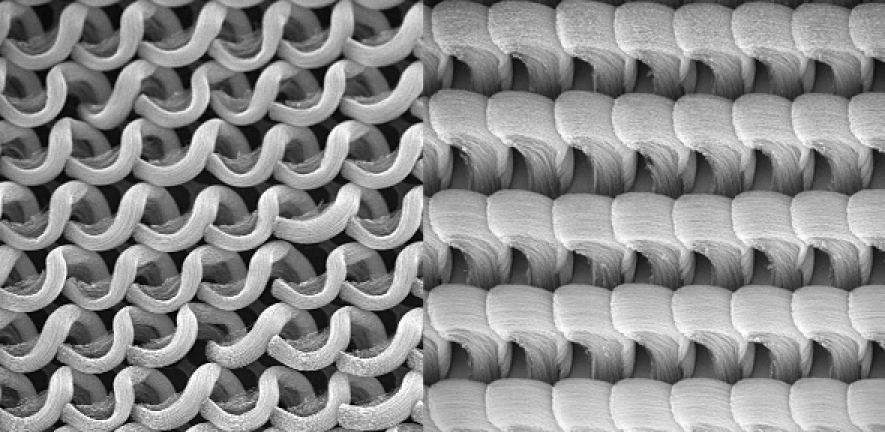
Method can produce strong, lightweight materials with specific surface properties.
Method can produce strong, lightweight materials with specific surface properties.
This will significantly advance our ability to fabricate advanced functional surfaces
Michael de Volder
A team of researchers has created a new way of manufacturing microstructured surfaces that have novel three-dimensional textures. These surfaces, made by self-organisation of carbon nanotubes, could exhibit a variety of useful properties — including controllable mechanical stiffness and strength, or the ability to repel water in a certain direction.
The technique works by inducing carbon nanotubes – extremely thin, hollow cylinders of carbon atoms - to bend as they grow. The mechanism is analogous to the bending of a bimetallic strip, used as the control in old thermostats, as it warms: one material expands faster than another bonded to it. But in this new process, the material bends as it is produced by a chemical reaction.
The process begins by depositing two patterns onto a substrate: one is a catalyst of carbon nanotubes; the second modifies the growth rate of the nanotubes. By offsetting the two patterns, the researchers showed that the nanotubes bend into predictable shapes as they extend. Details of the new technique were recently published in the journal Nature Communications.
The team were able to specify these simple two-dimensional instructions, and cause the nanotubes to form complex shapes in three dimensions. Where nanotubes growing at different rates are adjacent, they push and pull on each other, producing more complex forms.
“This process enables an unprecedented ability to fabricate well-controlled 3D microstructures in high volumes. This will significantly advance our ability to fabricate advanced functional surfaces,” said Dr Michael de Volder of the Institute of Manufacturing at the University of Cambridge, who led the research.
Few high-throughput manufacturing processes can achieve such flexibility in creating three-dimensional structures. This technique is attractive because it can be used to create large expanses of the structures simultaneously, and the shape of each structure can be specified by designing the starting pattern.
The technique could also enable control of other properties, such as electrical and thermal conductivity and chemical reactivity, by attaching various coatings to the carbon nanotubes after they grow. For example, coating the nanotubes with ceramic, using a method called atomic layer deposition, allows the mechanical properties of the structures to be controlled. When a thick coating is deposited, it results in a surface with exceptional stiffness, strength, and toughness relative to its density. When a thin coating is deposited, the structures are very flexible and resilient.
This approach may also enable high-fidelity replication of the intricate structures found on the skins of certain plants and animals, and could make it possible to mass-produce surfaces with specialised characteristics, such as the water-repellent and adhesive ability of some insects. “We’re interested in controlling these fundamental properties using scalable manufacturing techniques,” said Professor John Hart of MIT, one of the paper’s co-authors.
The durability of carbon nanotubes, which could allow them to survive in harsh environments, could be connected to electronics and function as sensors of mechanical or chemical signals.
This research was performed by Dr de Volder and Professor Hart, along with Dr Sei Jin Park at the University of Michigan, and Professor Sameh Tawfick of the University of Illinois at Urbana-Champaign.
The work was supported by the European Research Council, the Defense Advanced Research Projects Agency, and the Air Force Office of Scientific Research.
Adapted from MIT press release.
The text in this work is licensed under a Creative Commons Licence. If you use this content on your site please link back to this page. For image rights, please see the credits associated with each individual image.





